Shibuya Travel Guide – 10 Best Places to Visit for First-Time Visitors
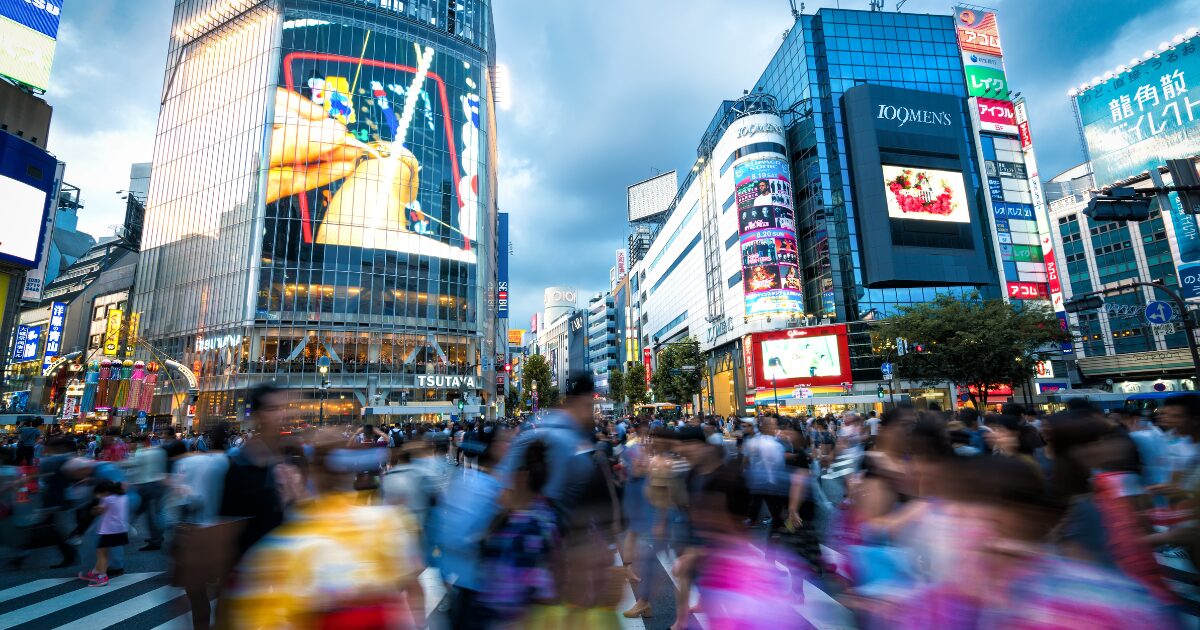
Planning a Tokyo trip? Discover the top 10 places to visit in Shibuya!
From the famous scramble crossing and youth fashion hubs to serene shrines, delicious food halls, and buzzing nightlife spots.
This Shibuya travel guide for first-timers covers all the best things to do in Shibuya, with tips on when to go, how to get there, and what not to miss.
About Shibuya
Shibuya is one of Tokyo’s most colorful and busy districts, packed with shops, dining, and nightlife that attract swarms of visitors.
For first-time travelers, Shibuya offers an exciting mix of neon-lit cityscapes and cultural experiences.
This is the neighborhood famous for the Shibuya Scramble Crossing (the world’s busiest pedestrian crossing) and the statue of Hachikō, the loyal dog – both internationally recognized tourist attractions.
But beyond those icons, Shibuya boasts world-class shopping, delicious food, vibrant youth culture, and even pockets of peace amid the urban buzz.
Shibuya Crossing
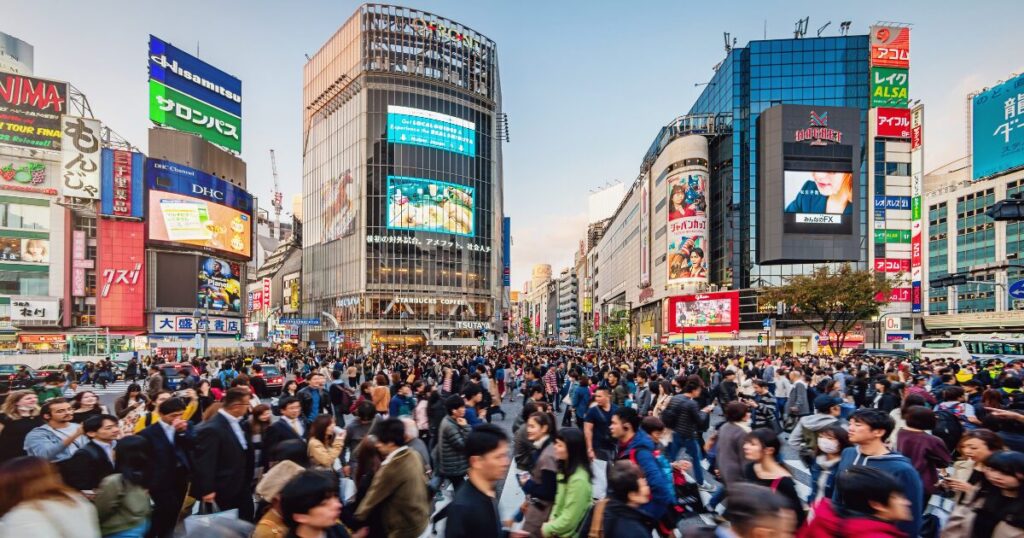
Shibuya’s famous Scramble Crossing is a must-see spectacle of organized chaos.
If there’s one image of Tokyo that every first-timer has in mind, it’s the Shibuya Scramble Crossing. This massive intersection in front of Shibuya Station stops traffic in all directions at once, allowing a flood of people to cross from every corner.
During peak times, an estimated 1,000 to 2,500 pedestrians surge across per light cycle, enough to fill a stadium in minutes. It’s an awe-inspiring sight of organized chaos, especially in the evenings when giant video screens and neon signs light up the surrounding buildings.
Join the crowd and experience the scramble for yourself – it’s perfectly safe and surprisingly orderly, as everyone weaves past each other in a kind of rhythmic dance.
How to Get There
The crossing is directly outside Shibuya Station’s Hachikō Exit.
If arriving by JR train such as the Yamanote Line, follow signs for the Hachikō Exit and you’ll step right into the scramble.
Best Viewing Spot
Starbucks (2nd Floor, Tsutaya Building / Q‑Front)
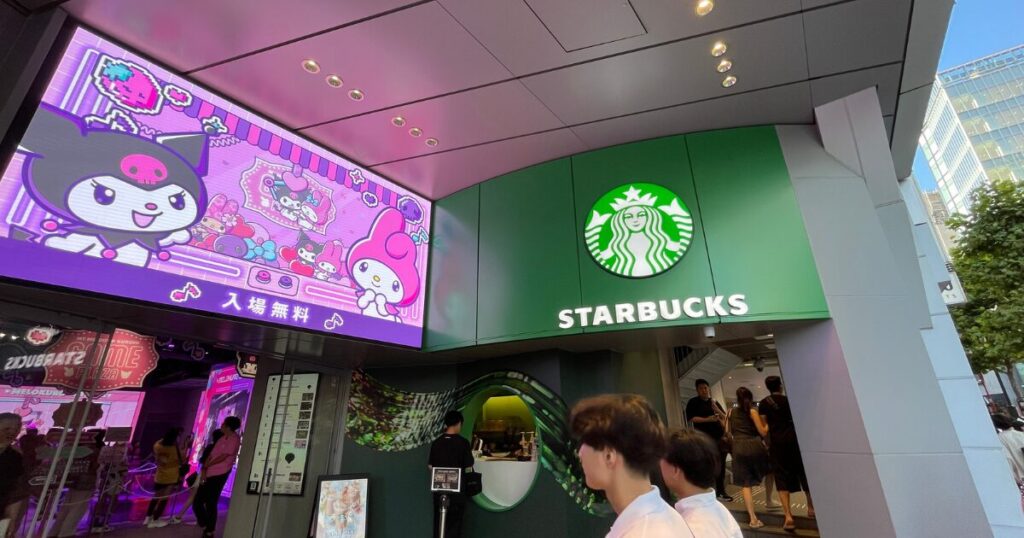
For a memorable photo, head to the second-floor Starbucks in the QFRONT building overlooking the crossing.
From this perch, you can watch thousands of people flow across in waves – an almost hypnotic spectacle.
Shibuya Mark City Pedestrian Bridge

A free public viewpoint, this elevated walkway directly connects Shibuya Station to Mark City and overlooks the crossing from the side.
It’s less glamorous but far less congested than cafés or paid decks
Mag’s Park at Magnet by Shibuya 109 (8th-Floor Rooftop Terrace)
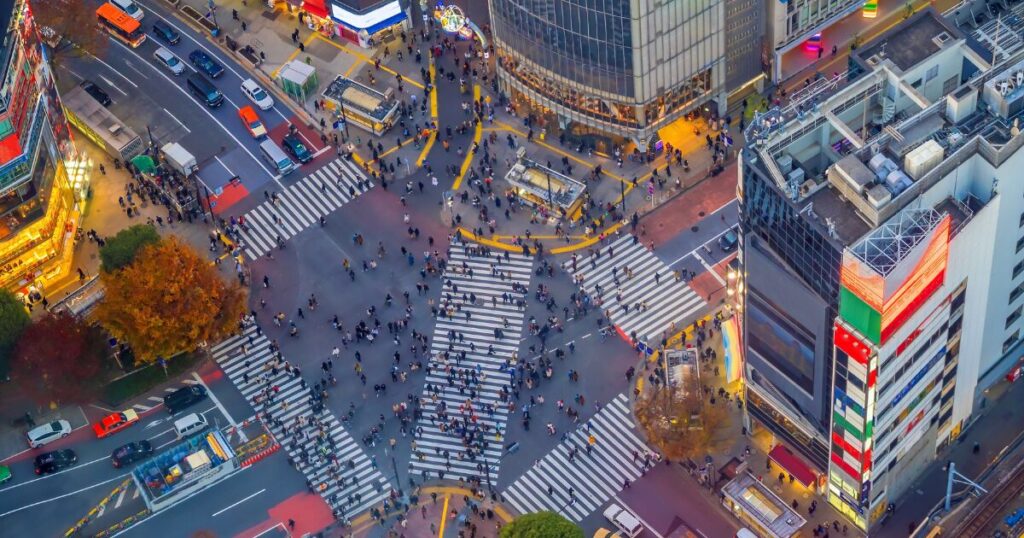
A favorite among creative photographers, Mag’s Park offers an elevated yet not-too-high angle of the crossing, perfect for capturing movement and light trails without being TOO far away!!
Shibuya Sky
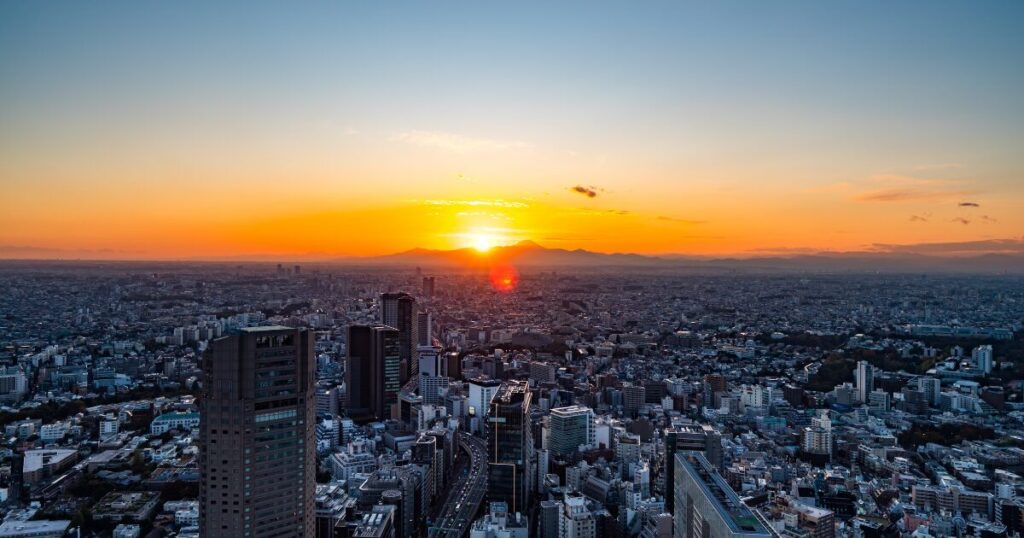
Perched 230 m above the streets, this premium observation deck provides a breathtaking 360-degree open‑air view.
Shibuya Hikarie Sky Lobby
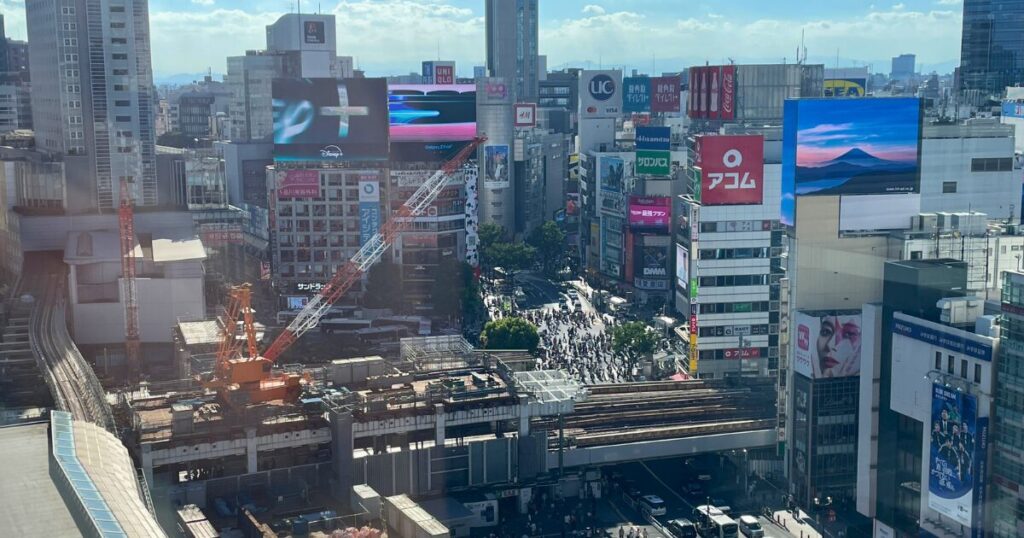
Though not as high as Shibuya Sky, the Sky Lobby on Hikarie’s 11th floor offers lovely floor-to-ceiling window views of the crossing and cityscape beyond.
Quick Comparison Table
| Spot | Height | Cost | Vibe | Rate |
|---|---|---|---|---|
| Starbucks | 2nd floor | Drink Purchase ($3~) | Busy café | ★★★★★ |
| Pedestrian Bridge | ~5m elevated | Free | Public walkway | ★★★★☆ |
| Mag’s Park | 8 floor up | $12 | Casual rooftop terrace | ★★★★★ |
| Shibuya Sky | ~230m | $13~$20 | Panoramic | ★★★★☆ |
| Shibuya Hikarie | 11th floor | Free | Quiet | ★★★☆☆ |
Insider Tip
The crossing is busiest after work hours and on weekend nights. If you prefer a less crowded experience, visit in the early morning.
But for full impact, embrace the evening rush – it’s an only-in-Tokyo moment you won’t forget.
Access Information
| Station | Shibuya Staion |
| Station Label | JY20 JA10 JS19 IN01 TY01 DT01 G01 Z01 F16 |
| Opening Hour | 24/7 |
| Entrance Fee | Free |
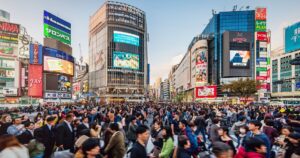
Hachikō Statue
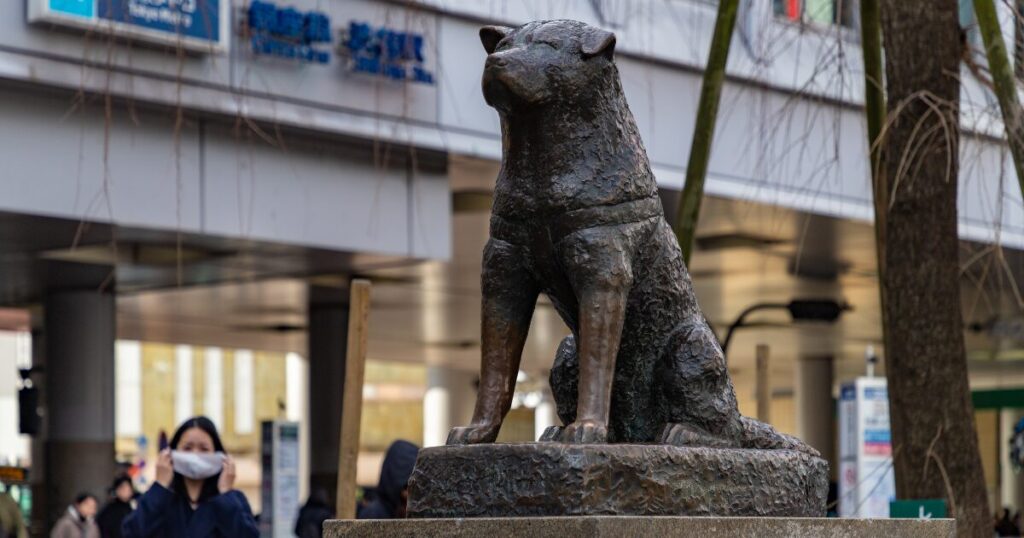
Right next to Shibuya Crossing, in a small plaza outside the station, you’ll find Hachikō. The bronze statue of a dog that has become one of Tokyo’s most beloved meeting spots.
The statue honors an Akita dog named Hachikō, celebrated for his legendary loyalty.
In the 1920s, Hachikō would greet his owner, a professor, at Shibuya Station every day after work – until one day the professor did not return, having unexpectedly passed away.

Remarkably, Hachikō kept coming back to the station every single day for nearly 10 years, waiting in vain for his owner’s return.
This touching story captured the hearts of Japanese people and eventually the world (it’s been the subject of books and movies), and in 1934 they erected this statue as a tribute to the dog’s devotion.
Today, Hachikō’s statue represents loyalty and perseverance, and it’s the place in Shibuya to rendezvous with friends (you’ll often hear locals say “Meet at Hachikō!”).
Snap a selfie with Hachikō and feel free to pat him on the head for good luck.
How to Find It
Hachikō is right outside Shibuya Station’s Hachikō Exit (which was named after the dog). As you emerge, look for the little bronze dog statue near the crosswalk. It’s usually surrounded by people, especially in afternoons and evenings.
Local Tip
If it’s busy and you want a photo, be patient and form an orderly queue. Early morning on a weekday is the quietest time to get a photo with Hachikō without the crowds.
Also, just behind the statue, check out the wall mural “Hachikō Family”, a colorful mosaic of Hachikō and other dogs, adding a cute backdrop to this charming spot.
Fun Fact
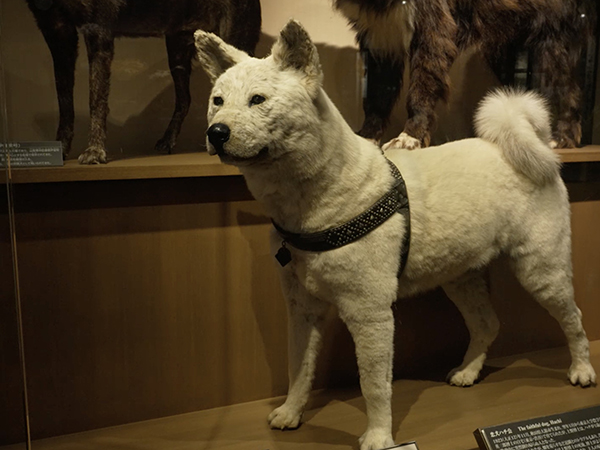
Hachikō’s story is so famous in Japan that it’s taught in schools as a lesson about loyalty.
There’s even a replica of the statue at the University of Tokyo (where Hachikō’s owner worked) and Hachikō’s preserved fur can be seen at the National Science Museum.
But seeing the original statue in Shibuya, at the very spot where Hachikō waited, is a special experience that brings the tale to life.
Access Information
| Station | Shibuya Staion |
| Station Label | JY20 JA10 JS19 IN01 TY01 DT01 G01 Z01 F16 |
| Opening Hour | 24/7 |
| Entrance Fee | Free |
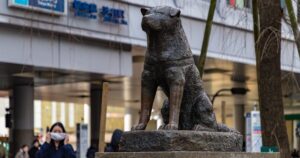
Shibuya Sky
The open-air “Sky Edge” platform at Shibuya Sky offers panoramic Tokyo views – a thrill for any visitor.
For a breathtaking panorama of Tokyo, head up to Shibuya Sky, the rooftop observation deck of the Shibuya Scramble Square building.
Towering roughly 230 meters (750 feet) above the streets, Shibuya Sky is the highest point in the district and Tokyo’s newest must-visit observatory.
From here you can spot famous landmarks across the city. On a clear day you might see Tokyo Tower, the distant Tokyo Skytree, and even Mt. Fuji peeking on the horizon.
One corner of the deck features the “Sky Edge” platform, a triangular jut where brave visitors love to pose for edgy photos looking straight down at Shibuya.
Visiting around sunset is especially magical. Watch the sky turn colors and the city lights flicker on.
After dark, Shibuya Sky hosts a subtle light show called “Crossing Light,” with 18 rotating beams illuminating the night sky above Shibuya.It feels almost futuristic and underscores Shibuya’s vibe as a city of neon.
Getting There
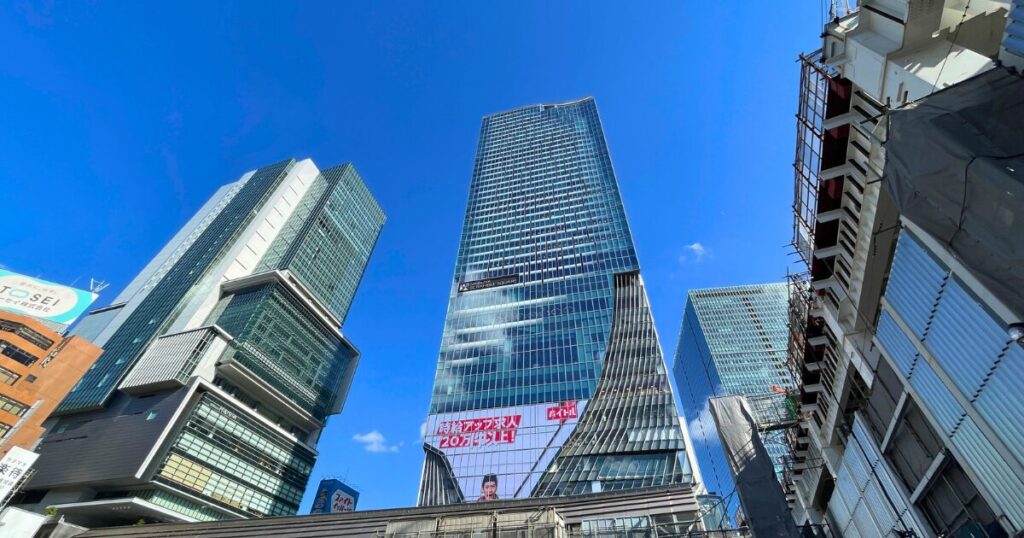
Shibuya Sky is on the roof of Shibuya Scramble Square, a new skyscraper directly connected to Shibuya Station. From the station, follow signs inside for Shibuya Scramble Square or Shibuya Sky.
An elevator will take you to the 45th floor, where you transfer to the express lift up to the rooftop.
Hours & Tickets
The observatory is open daily (typically 10am-10:30pm, last entry around 9pm). It’s best to buy tickets in advance online to reserve a time slot and save a few hundred yen on the door price.
Same-day tickets at the door are around ¥2,000–¥3,000 for adults (price varies by time of day), but can sell out during peak times. Booking ahead not only guarantees your spot but also lets you skip potential lines.
Best Time to Visit
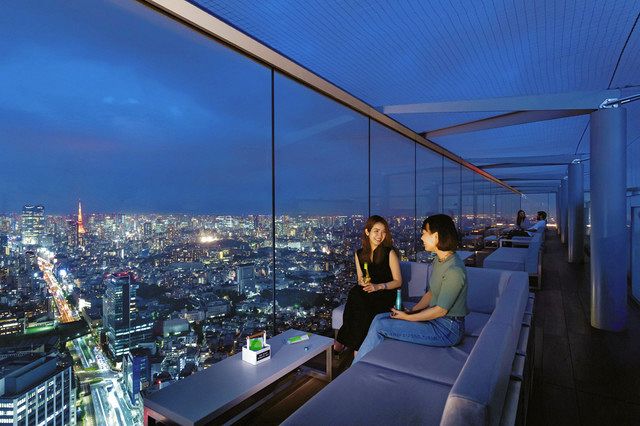
Aim for late afternoon, so you can catch daylight views and the evening skyline.
Many recommend arriving about an hour before sunset – that way you’ll see the city in daylight, watch a gorgeous sunset, and then enjoy the Tokyo city lights after dark. You get a bit of everything!
Extra Tip
It can be windy up top, so hold onto hats and loose items. Large bags, tripods, and other items aren’t allowed on the rooftop.
Also, don’t rush off after taking in the view – the 46th floor indoor lounge has digital art displays and a café/bar where you can relax with a drink while gazing out through floor-to-ceiling windows.
It’s a nice way to wind down and reflect on the Tokyo panorama you just experienced.
Access Information
| Station | Shibuya Staion |
| Station Label | JY20 JA10 JS19 IN01 TY01 DT01 G01 Z01 F16 |
| Opening Hour | 10AM~10:30PM |
| Entrance Fee | ¥2,000~¥3,000 |
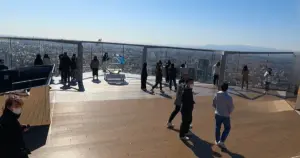
Shibuya 109

When it comes to shopping in Shibuya, SHIBUYA109 (pronounced “ichi-maru-kyū”) is iconic.
This cylindrical silver tower at the end of Center Gai street is a trend-setting fashion mall that has long served as a beacon of youth culture and fashion in Tokyo.
Shibuya 109’s target demographic is teenage and 20-something women, and inside you’ll find floor after floor of edgy boutiques, clothing shops, and accessory stores catering to the latest J-pop and Harajuku-inspired styles.
In total, there are over 120 stores spread across 10 floors, selling everything from chic streetwear and cute character goods to cosmetics and shoes.
Even if you’re not there to shop till you drop, it’s worth going inside to feel the energy. The music is loud, the visuals are vibrant, and the escalators winding up through the neon-signed atrium make it a fun experience.
Location
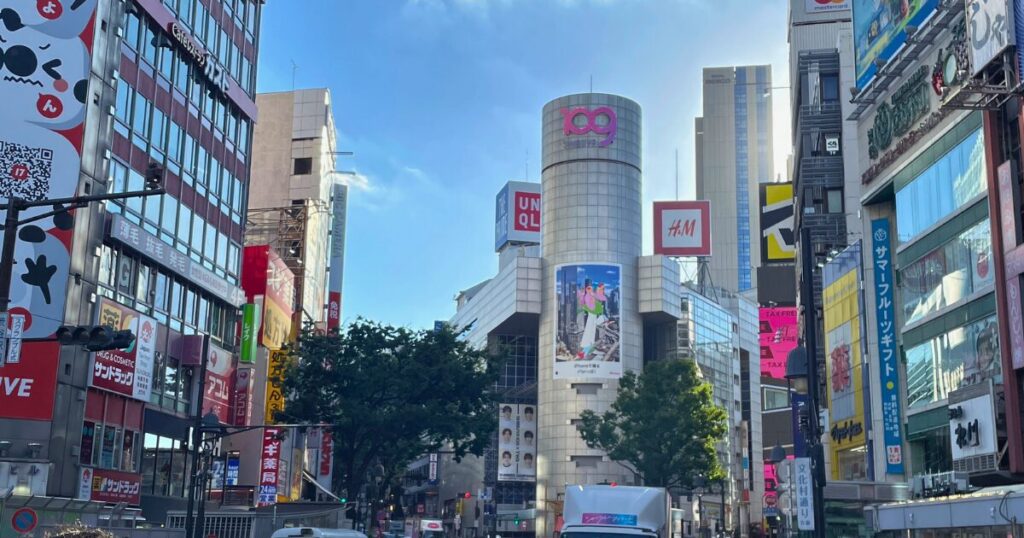
Shibuya 109 is hard to miss. It’s the round high-rise with a big “109” logo, located at the northwest corner of the Shibuya Crossing (near the Center Gai entrance).
From Shibuya Station Hachikō Exit, just cross the scramble and walk toward the building with “109” signage.
Hours
Typically 10am to 9pm daily (individual store hours may vary). Going right when it opens is a good strategy if you want to browse with fewer crowds.
Evenings and weekends see throngs of shoppers, which can be fun but a bit overwhelming if you’re just window-shopping.
Shopping Tips

Many shops in 109 are tax-free for tourists if you spend over a certain amount (usually ¥5,000). Look for “Tax Free” signs and bring your passport.
Also, keep an eye out for fukubukuro (lucky bags) if you visit around New Year’s, when stores sell grab bags of items at a steep discount.
And don’t be shy to explore all the way up to the top floor; there’s often a mix of styles on different levels (for instance, streetwear on one floor, more girly lolita-style on another).
Access Information
| Station | Shibuya Staion |
| Station Label | JY20 JA10 JS19 IN01 TY01 DT01 G01 Z01 F16 |
| Opening Hour | 10AM~9PM |
| Budget | ¥10,000 |
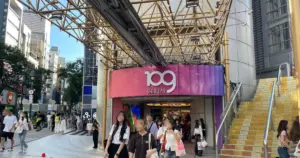
Shibuya Center-Gai

Just across from Shibuya Crossing, an illuminated sign welcomes you into Center-Gai (Centre Gai or “Sentā-gai” in Japanese), a bustling pedestrian street that is the epicenter of Shibuya’s youth culture.
Walk under the archway and you’ll enter a lively maze of narrow streets lined with shops, fashion boutiques, music stores, game centers, casual eateries, and countless glowing signs.
Throughout the day, hordes of young people come here hunting for the latest in fashion and music.
It’s essentially Shibuya’s main shopping promenade and hangout area for teens and 20-somethings.
The soundtrack to Center-Gai is a mix of J-Pop and club music wafting from stores, staff out front advertising sales, and general cheerful chatter. It’s chaotic but exciting.
Access Information
| Station | Shibuya Staion |
| Station Label | JY20 JA10 JS19 IN01 TY01 DT01 G01 Z01 F16 |
| Opening Hour | 24/7 |
| Budget | ¥1,000 |
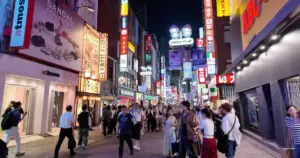
Nonbei Yokocho
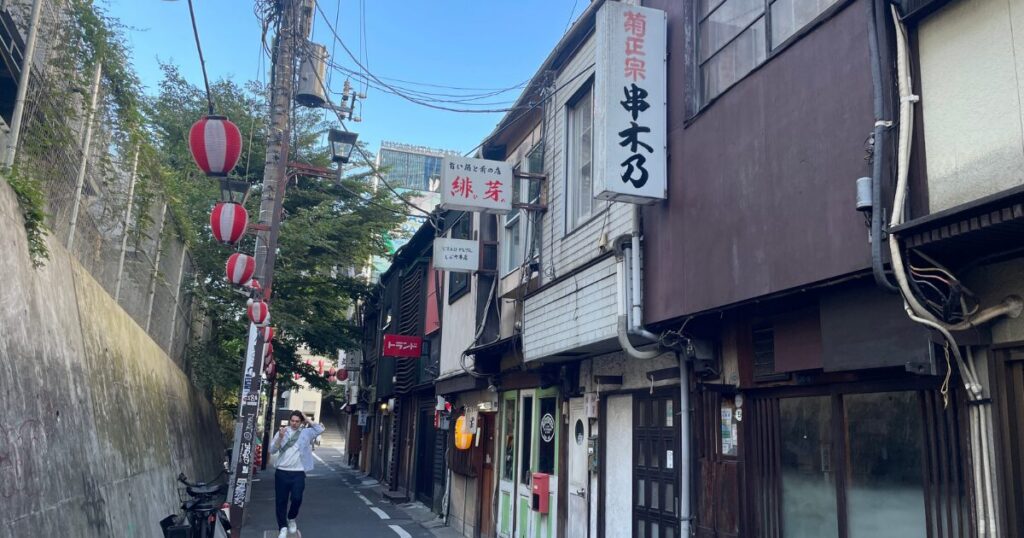
Amid Shibuya’s ultra-modern landscape, Nonbei Yokocho offers a delightful step back in time.
The name literally means “Drunkard’s Alley,” and it’s a pair of narrow alleys tucked just northwest of Shibuya Crossing that are filled with tiny old-school bars and eateries.
Dating back to the early 1950s, this yokocho sprang up post-WWII and retains the charm of Showa-era Tokyo.
Think narrow lanes lined with red paper lanterns, old wooden façades, and doorways that lead into closet-sized bars where locals are elbow-to-elbow sipping sake and shochu.
In total, Nonbei Yokocho has around 40 to 50 tiny bars, some only fit five or six people at a time!
Finding Nonbei Yokocho
The alleys are located just outside the Shibuya Station west side. Look for a sign that says “のんべい横丁” (Nonbei Yokocho) at an entrance, or simply wander to the small lane area under some dark trellises and low-hanging lanterns.
It’s less than a 5-minute walk from Hachikō Square, but feels worlds apart.
Tips for Visiting
Because the bars are so small, it’s best to go with one or two people at most. Large groups are a no-go here.
Also, be aware many bars have a cover charge which usually includes a small snack (called otoshi).
This is normal in Japanese izakayas and bars, not a rip-off. Drinks themselves are typically ¥500~¥800.
It’s polite to order at least one drink if you sit down, and perhaps a snack if they offer food. Most places are cash-only, so have some yen on hand.
Access Information
| Station | Shibuya Staion |
| Station Label | JY20 JA10 JS19 IN01 TY01 DT01 G01 Z01 F16 |
| Opening Hour | 6PM~12AM |
| Budget | ¥3,000~¥5,000 |
Takeshita Street
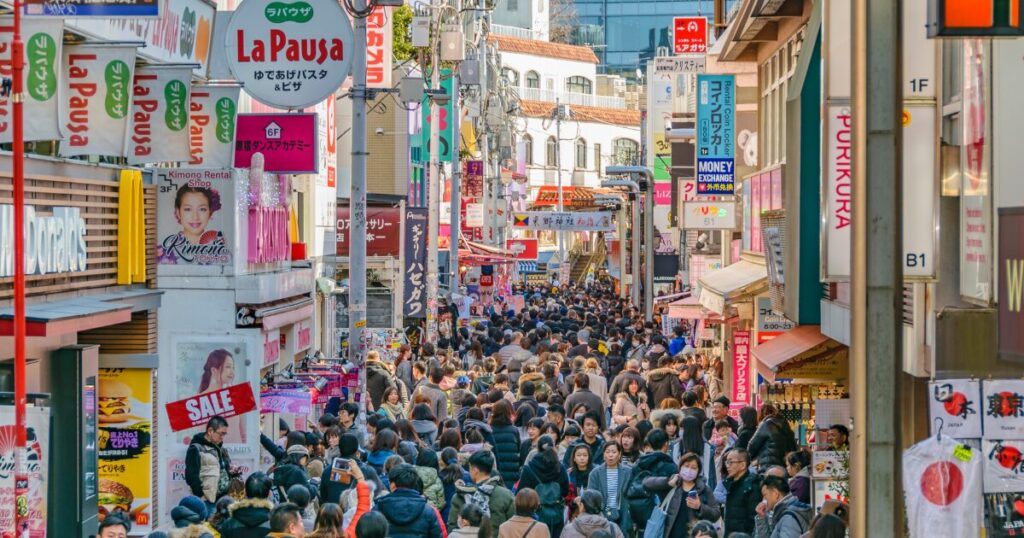
Just one train stop or a 15-minute walk from Shibuya is Harajuku’s Takeshita Street (Takeshita-dori) and if you have any interest in youth pop culture, fashion, or just fun people-watching, it’s a must-visit.
Technically part of the Shibuya ward, Harajuku is the birthplace of Japan’s “kawaii” (cute) subculture and Takeshita Street is its ground zero.
This narrow pedestrian lane is crammed with trendy boutiques, character goods shops, cosplay stores, and dessert stands catering to fashion-forward teens.
Aside from shopping, Takeshita Street is famous for its sweet treats.
You cannot leave without trying a Harajuku crepe. These aren’t the dainty Parisian kind, but rather overstuffed Japanese crepes loaded with whipped cream, fruit, ice cream, even slices of cheesecake!
Look for longstanding vendors like Marion Crêpes or Angel’s Heart . You’ll spot their takeout windows with plastic displays of all the flavors.
Getting There
Takeshita Street is directly opposite JR Harajuku Station on the Yamanote Line.
From Shibuya, it’s one stop on the JR or a short taxi ride. You’ll know you’re there when you see the Takeshita Street archway sign at the entrance. Just join the crowd funneling under the arch.
Best Times to Visit
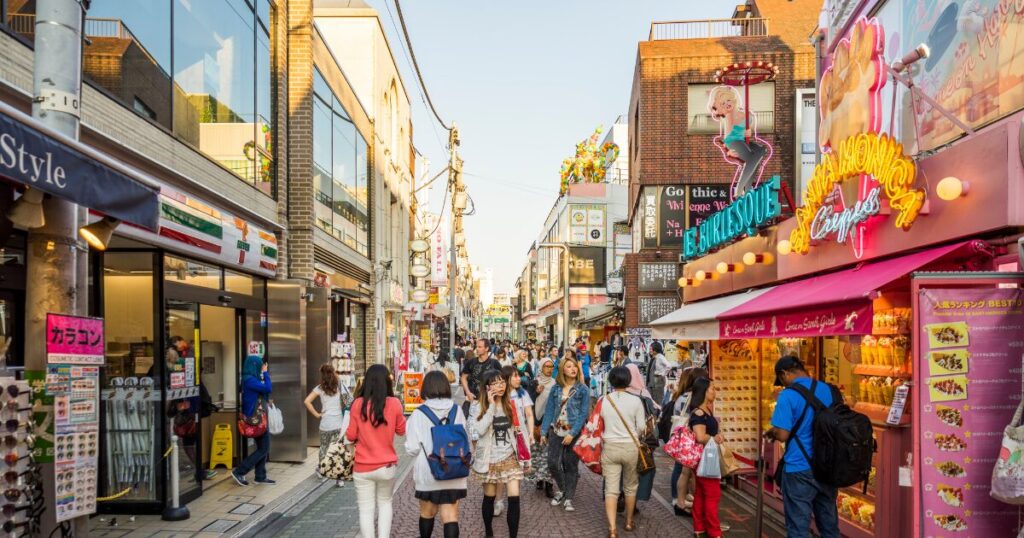
Weekdays are far less crowded than weekends.
If you prefer a calmer experience, go on a Monday–Thursday in late morning. If you want to see Harajuku in full swing, Sunday afternoon is peak, but be ready for wall-to-wall people.
Local Tip
Don’t miss the side alleys! Takeshita is the main drag, but nearby streets like Cat Street offer more hip boutiques and vintage shops in a less frenetic setting.
And if you need a break, there’s a hidden food court on the second floor of Tokyu Plaza Omotesando with a rooftop garden, a nice spot to sit down with your crepe or coffee away from the chaos.
Access Information
| Station | Harajuku Staion |
| Station Label | JY19 F15 C03 |
| Opening Hour | 24/7 |
| Budget | ¥3,000~¥10,000 |
Meiji Jingu Shrine
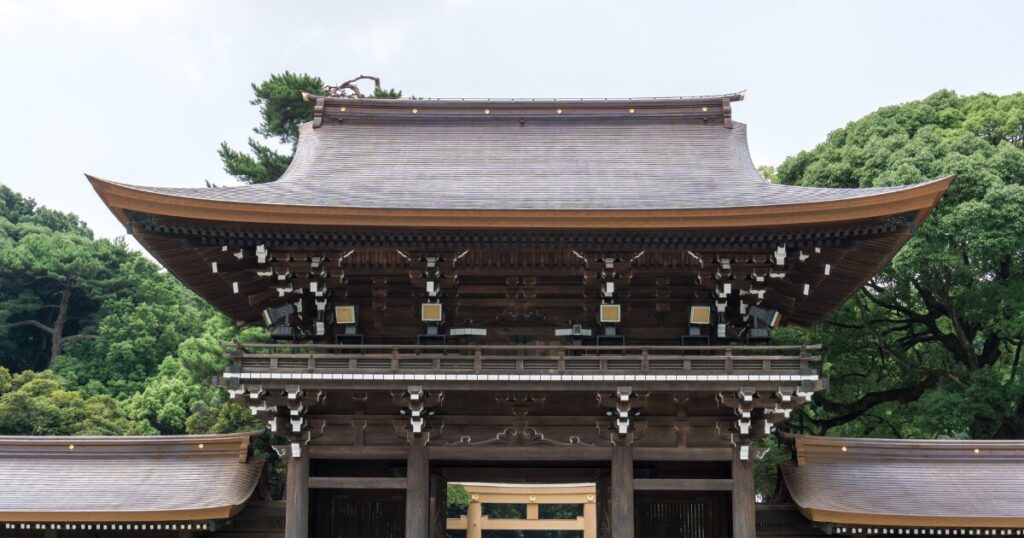
Meiji Jingu (Meiji Shrine) is a grand Shinto shrine dedicated to Emperor Meiji and Empress Shoken, set in a sprawling 70-hectare forest right in the heart of Tokyo.
The moment you walk under the towering 12-meter-high torii gate at the entrance, you’ll feel the city noise fade away.
The shrine itself features a large courtyard, a main hall where you can offer prayers, and walls displaying ema (wooden prayer plaques) written by visitors from around the world.
Location & Access
Meiji Jingu is located next to Yoyogi Park, about a 10-minute walk north of Shibuya Crossing (or just one stop from Shibuya on JR Yamanote Line to Harajuku Station, then follow signs to the shrine entrance).
The main entrance is across from Harajuku Station. Another entrance is on the Yoyogi side near Kitasando Station. Entry to the shrine grounds is free.
Hours
The shrine itself opens at sunrise and closes at sunset (the exact time varies by season, roughly 5:00am to 5:20pm in winter, up to 6:30pm in summer). The surrounding park area can be accessed around the clock, but it’s best visited during daylight to appreciate the forest.
Etiquette
This is an active religious site, so behave respectfully. Keep voices down, don’t eat or drink in the inner grounds, and ask permission before photographing people.
At the main hall, if you want to make a wish, you can write on an ema (wooden plaque) available for a small fee, or buy a charm from the shrine shop as a souvenir of protection or good fortune.
Don’t Miss
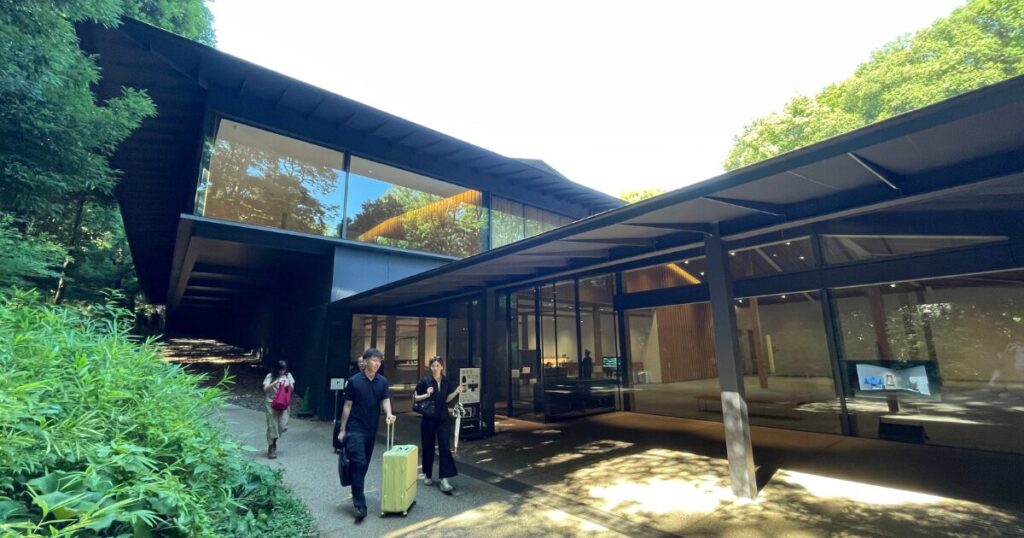
Near the inner shrine is the Meiji Jingu Museum, which often displays personal belongings of the Emperor and Empress. Also, if you visit in early summer (June), check out the Meiji Jingu Iris Garden in the southern part of the grounds.
It’s full of blooming irises and was said to be a favorite of the Empress. Year-round, Meiji Jingu is a haven of calm. As one travel writer put it, once you step into this forest, you’ll forget the hustle and bustle outside. it’s the perfect retreat when you need a zen moment in your trip.
Access Information
| Station | Harajuku Staion |
| Station Label | JY19 F15 C03 |
| Opening Hour | 5AM~6PM (Vary by season) |
| Entrance Fee | Free |
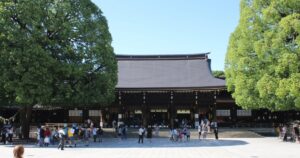
Yoyogi Park

Right next to Meiji Shrine lies Yoyogi Park, one of Tokyo’s largest city parks and a beloved hangout spot for locals. If you need a break from sightseeing or shopping, this is the place to relax, picnic, or even join a local event.
Yoyogi Park spans about 54 hectares of open lawns, ponds, and wooded areas.
An expansive green space where you can toss a frisbee, stretch out on the grass, or watch Tokyoites in their weekend routines. You might see people practicing dance routines, doing yoga, playing music, or walking an army of cute dogs (there’s a big dog run area).
Yoyogi is also known for its seasonal charms. In spring, it’s a hotspot for cherry blossom (sakura) viewing about 700 cherry trees bloom here, and when they do, the park transforms into one massive hanami party.
Groups lay out tarps, share food and drinks, and enjoy the blossoms together in a festive atmosphere. If you’re visiting during late March or early April, definitely consider joining in.
Access
Yoyogi Park is adjacent to Harajuku/Meiji Shrine. The easiest entry is from Harajuku Station (JR Yamanote) or Meiji-jingumae Station (Metro Chiyoda/Fukutoshin lines). From the station, it’s a 1-2 minute walk to the park’s main gate.
Another entry is on the north side near Yoyogi-koen Station (Metro Chiyoda Line). The park is free to enter and generally open 24/7.
What to Do
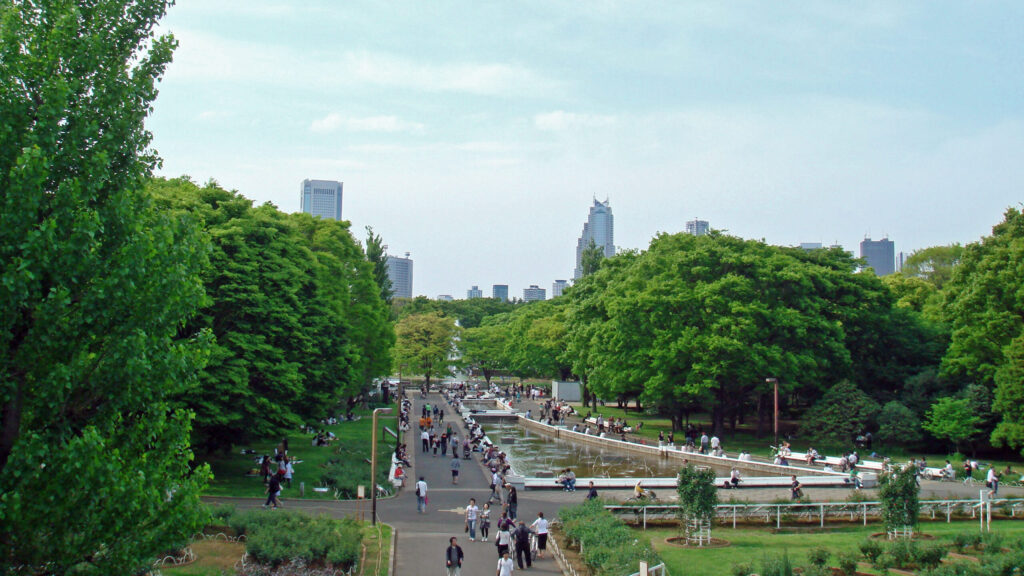
If you’re up for exercise, there are jogging paths. Rentable bicycles were available pre-pandemic at a cycling center, check if re-opened. Otherwise, do as locals do. Bring some snacks (you can grab a coffee or bento from a convenience store on your way) and have a mini picnic.
On a sunny day, Yoyogi’s lawns are dotted with friends and families relaxing.
Events & Tips

Keep an eye on the Yoyogi Park Event Plaza near the NHK Hall side.
If you hear music or see tents, wander over to catch what’s happening. There’s often something: a traditional dance showcase, a charity run, or a food festival with stalls from different countries.
If you’re a photographer, Yoyogi is fantastic for candid street photography. Lastly, note that alcohol is allowed, but public manners still apply. Clean up any trash and use the many bins available.
Access Information
| Station | Harajuku Staion / Yoyogi Park Station |
| Station Label | JY19 F15 C03 / C02 |
| Opening Hour | 24/7 |
| Entrance Fee | Free |
Shibuya Tokyu Food Show
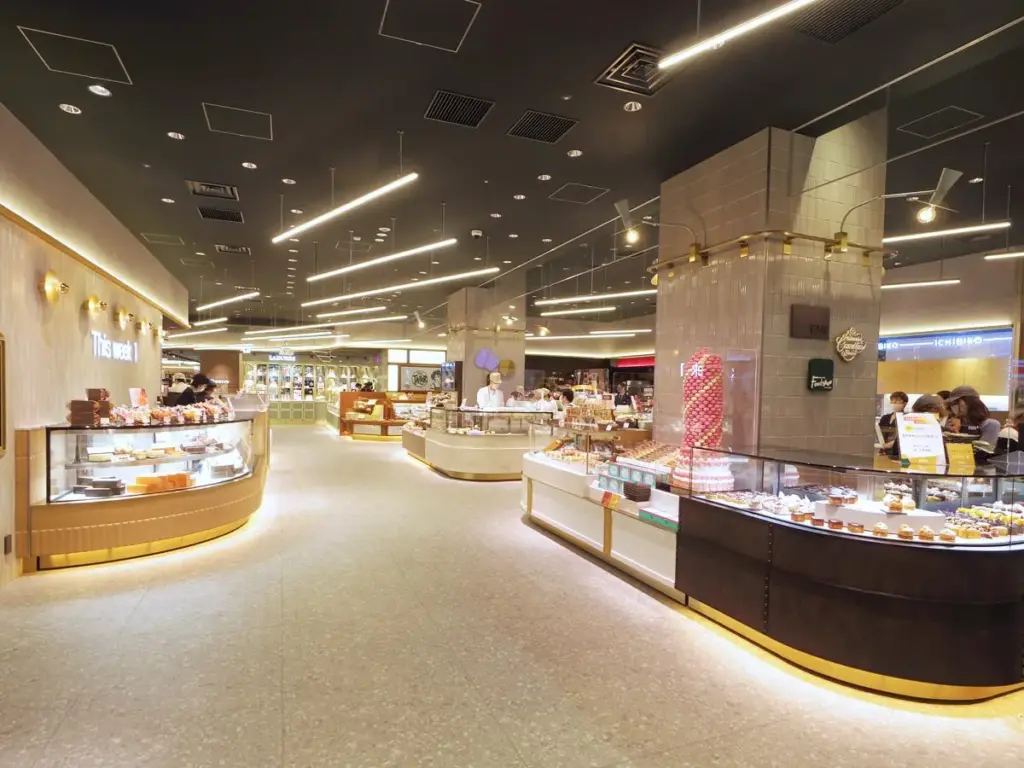
One of the joys of visiting Japan is exploring a depachika.
The extravagant food halls located in the basements of department stores. In Shibuya, the Tokyu Food Show is the ultimate depachika destination. Fresh off a major renovation in 2021, this sprawling marketplace became the largest food hall in Shibuya, and it’s an absolute paradise for food lovers.
Located under Shibuya’s Tokyu Department Store, the Food Show is split into sections: a sweets zone on one side, a fresh grocery area with premium produce and a fish market feel, and a gourmet prepared foods zone with stalls selling everything from sushi rolls and bento boxes to international deli items.
The variety is mind-boggling. You can literally assemble a multi-course meal from different vendors.
Location
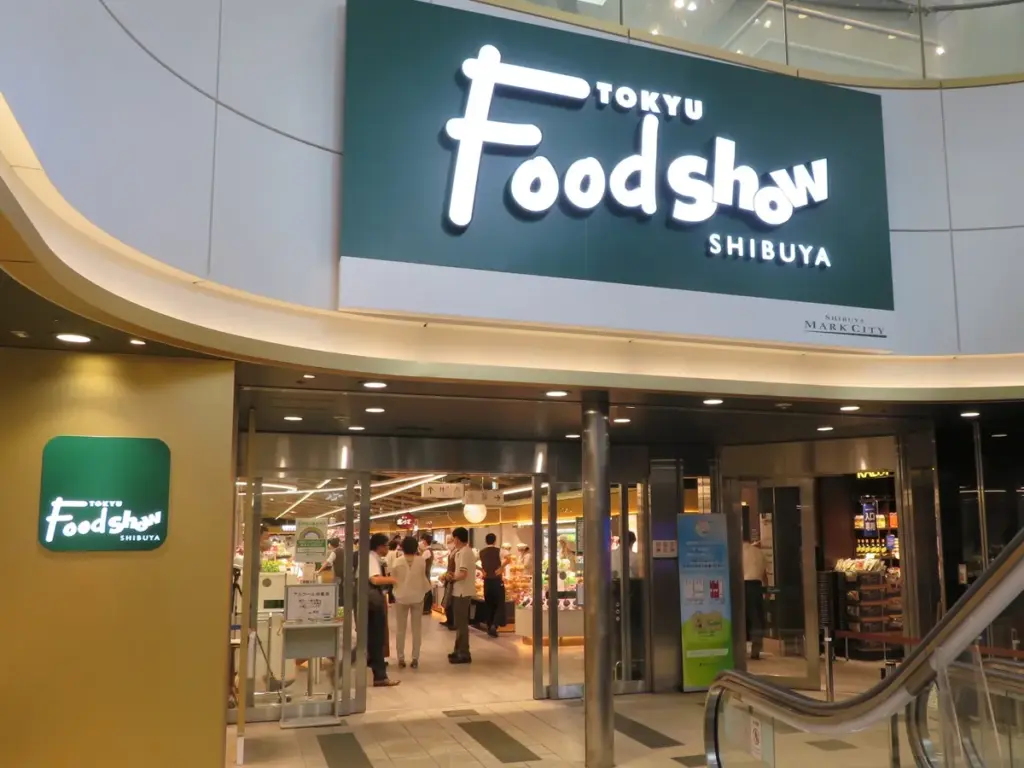
Tokyu Food Show is on the B1/B2 floor of the Tokyu Department Store (Shibuya Station), attached to Shibuya Station’s East Exit.
Essentially, if you’re in Shibuya Station or Shibuya Mark City, follow signs to Tokyu Department Store or ask for “Food Show.” It’s directly connected underground, which is convenient on a rainy day.
Pro Tip
The Food Show can get crowded during the evening rush.
If you’re navigating with family or a group, choose a meeting spot in case you get separated in the maze of aisles. Also, keep in mind that depachika etiquette is generally to look and buy – not a place to eat while walking.
Use the mentioned standing area to taste your food, or wait until you step outside.
And enjoy the impeccable service. The staff will often wrap your items beautifully and thank you profusely. It’s an example of Japanese hospitality even in a busy market setting.
Access Information
| Station | Shibuya Staion |
| Station Label | JY20 JA10 JS19 IN01 TY01 DT01 G01 Z01 F16 |
| Opening Hour | 10AM~9PM |
| Budget | ¥2,000~¥3,000 |
Miyashita Park
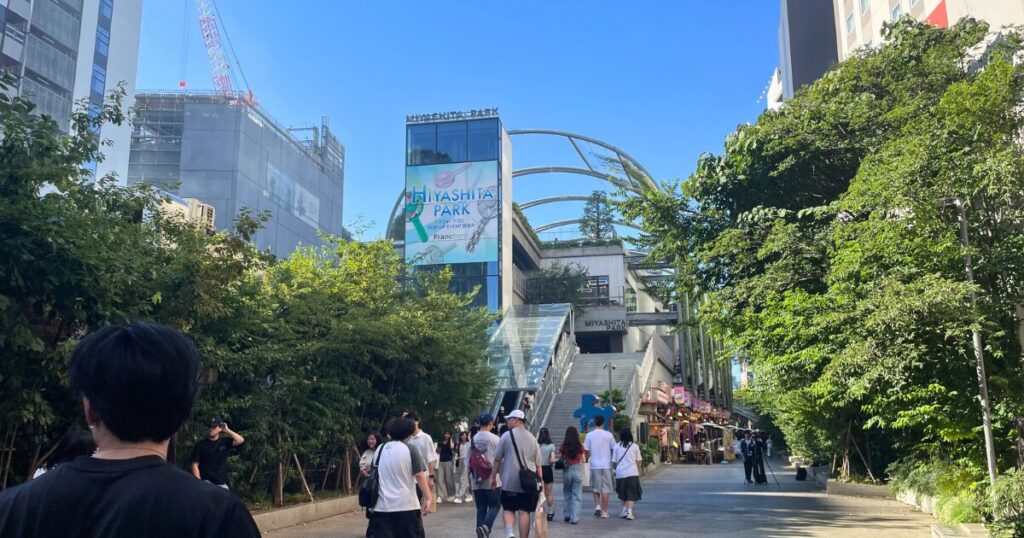
Miyashita Park is a shining example of Shibuya’s continual evolution, blending leisure, shopping, and urban green space in one multi-level complex. Perched atop a sleek shopping mall, this rooftop park stretches along 330 meters of Shibuya’s cityscape.
Visitors will find lush lawns and benches perfect for a breather amid the bustling city, as well as surprising athletic facilities including a public skatepark, bouldering wall, and even a sand-covered volleyball court for beach lovers in the city center.
The ambiance is a mix of trendy modern design and relaxed outdoor vibes, making it a favorite hangout for local youth and curious travelers alike.
Whether you want to shop at cutting-edge boutiques below or simply chill under the sky, Miyashita Park offers a refreshing retreat without leaving central Shibuya.
Local Tips
Visit in late afternoon to catch some sun and possibly watch skateboarders in action, then stick around as neon signs begin to glow at dusk for a cool contrast between the serene park and Shibuya’s city lights.
The rooftop is open until around 11 PM, so it’s perfect for an evening stroll. If you’re hungry, check out Shibuya Yokocho in the same complex – a retro izakaya alley on the lower floor – for a bite of local food and drink after relaxing in the park.
Access Information
| Station | Shibuya Staion |
| Station Label | JY20 JA10 JS19 IN01 TY01 DT01 G01 Z01 F16 |
| Opening Hour | 8AM~11PM |
| Budget | ~¥3,000 |
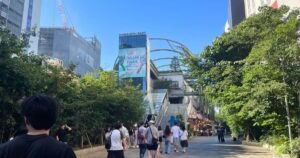
Pokémon Center & Nintendo Store Shibuya

Gamers and pop-culture fans won’t want to miss the dynamic duo of Pokémon Center Shibuya and Nintendo Tokyo, two flagship stores that share the same floor in the Shibuya Parco shopping complex.
Located on the 6th floor of the sleek Shibuya Parco building, these stores are a paradise of play and nostalgia.
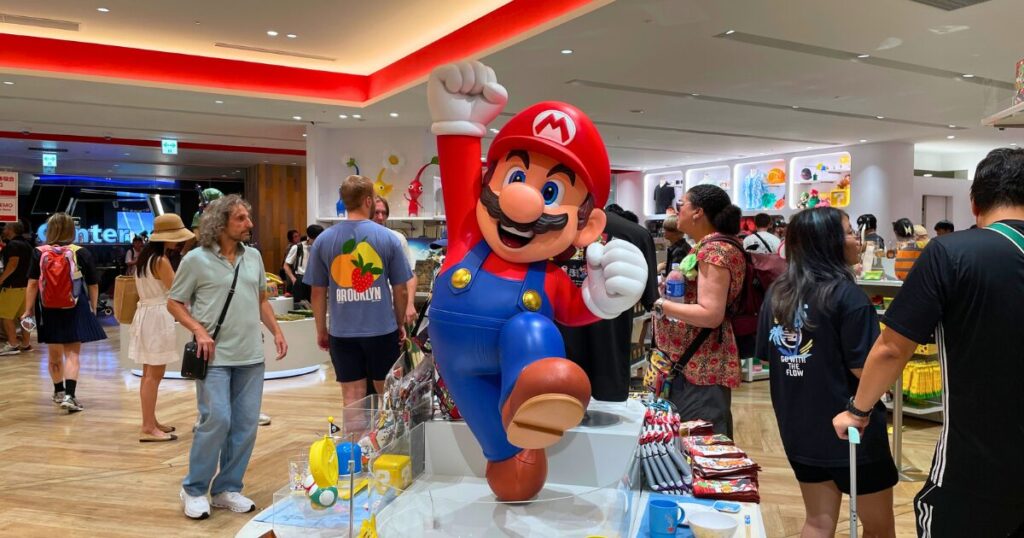
The Nintendo Tokyo store overflows with exclusive merchandise featuring Mario, Zelda, Pokémon, Animal Crossing, and all the other legendary characters from Nintendo’s games.
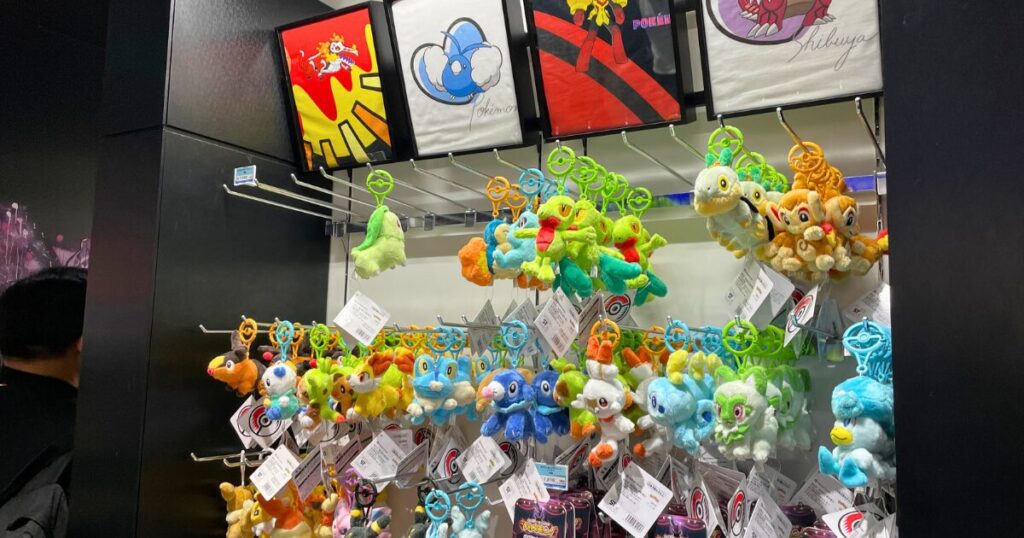
Next door, the Pokémon Center Shibuya transports you into the world of Pokémon the moment you step inside – you’re greeted by a life-size Mewtwo suspended in a high-tech tank, blurring the line between reality and the game universe.
Shelves are packed with plush Pikachus, trading cards, figurines, and limited-edition items you can only find here in Shibuya.
Together, these two stores create an immersive shopping experience that’s equal parts retail and interactive museum for fans of Japanese gaming culture.
Even casual visitors will appreciate the colorful displays and the peek into Japan’s modern pop obsessions.
Access
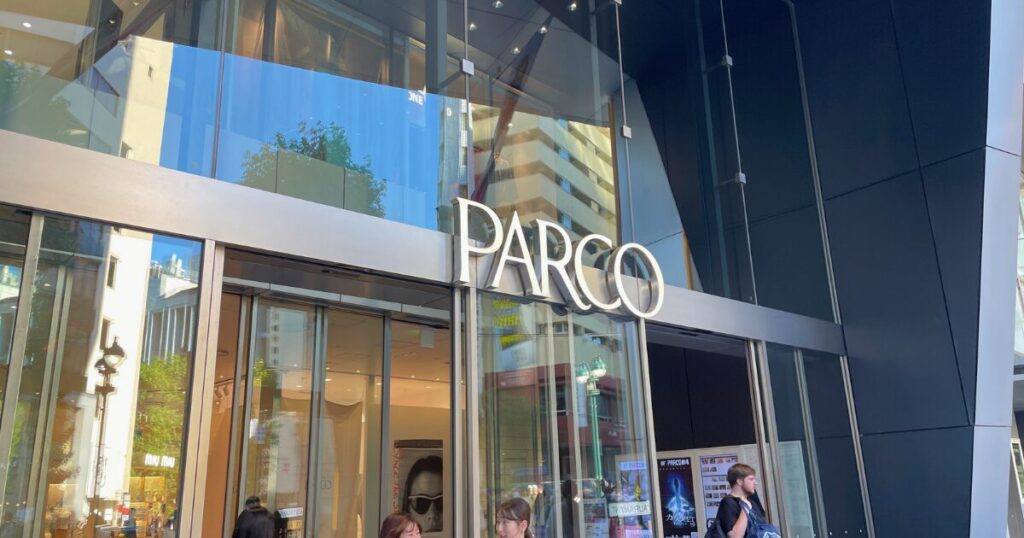
Shibuya Parco is about a 5-minute walk from Shibuya Station (Hachikō Exit), located in the Jinnan/Udagawa-cho area of Shibuya.
Inside Parco, head to the 6th floor via escalators or elevators; as you approach, you’ll likely spot the crowds and banners for the Nintendo, Pokémon, Capcom, and Shonen Jump specialty stores all clustered together.
If you’re coming from Harajuku/Omotesandō, it’s a 10-15 minute walk down Cat Street toward Shibuya to reach Parco.
Access Information
| Station | Shibuya Staion |
| Station Label | JY20 JA10 JS19 IN01 TY01 DT01 G01 Z01 F16 |
| Opening Hour | 10AM~9PM |
| Budget | ~¥10,000 |
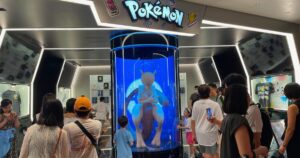
Omotesandō

Omotesandō is Tokyo’s answer to the Champs-Élysées, an elegant, zelkova tree-lined avenue known for its luxury boutiques, modern architecture, and stylish sidewalk scene.
Stretching from the entrance of Meiji Shrine all the way to Aoyama-dōri, Omotesandō was originally created in the 1920s as the grand frontal approach to the shrine, and today it has transformed into one of Tokyo’s premier shopping streets.
Strolling this broad boulevard, you’ll find flagship stores for world-famous brands housed in buildings designed by celebrity architects.
In fact, architecture buffs will love spotting landmarks like Omotesando Hills and the glassy Tod’s Building among others.
Omotesando Hills
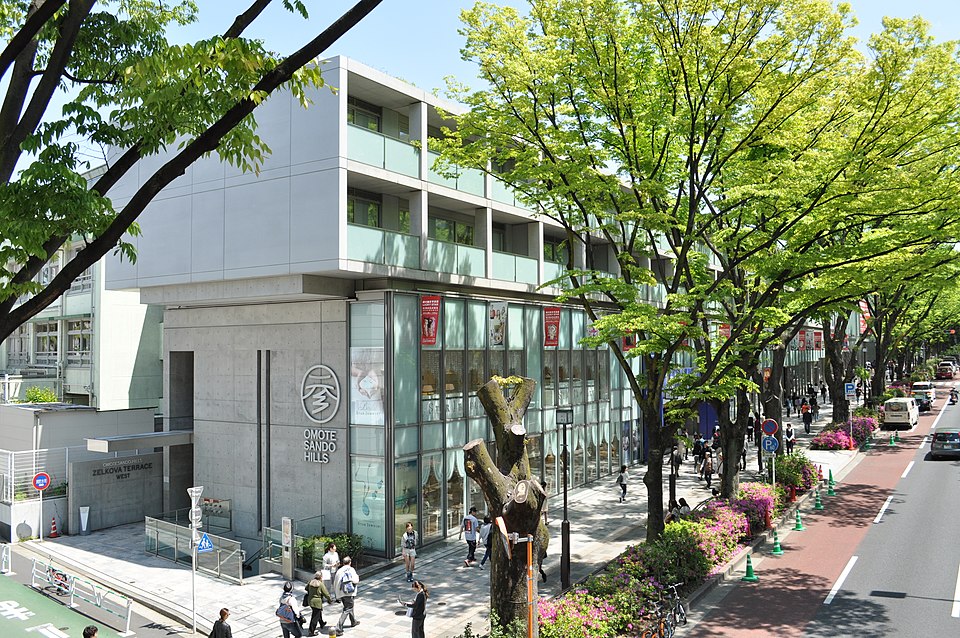
Access Information
| Station | Omotesando Staion |
| Station Label | G02 Z02 C04 |
| Opening Hour | 24/7 |
| Budget | ¥0~¥100,000 |
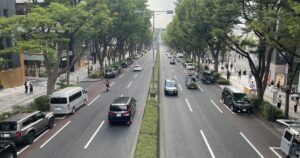
Nezu Museum & Garden

Add a touch of art and tranquility to your Shibuya itinerary by visiting the Nezu Museum, a cultural gem nestled in the upscale Aoyama district near Omotesandō.
This museum is famed for its extensive collection of pre-modern Japanese and East Asian art – over 7,000 pieces including ancient calligraphy, Buddhist sculptures, lacquerware, textiles, and pottery, some of which are designated National Treasures.
The exhibits rotate seasonally, so there’s always something new and fascinating on display, whether it’s tea ceremony utensils or ink paintings from centuries past.

But what truly sets Nezu Museum apart is its stunning traditional garden out back – a sprawling 17,000 square meter oasis of greenery, winding paths, stone lanterns, and carp-filled ponds.
Once the private garden of the museum’s founder Nezu Kaichirō, this space feels like a secret forest tucked in the city.
Visiting Nezu Museum is a refreshing change of pace from the city’s hustle: it’s part art immersion, part meditative nature walk.
Access Information
| Station | Omotesando Staion |
| Station Label | G02 Z02 C04 |
| Opening Hour | 10AM~5PM |
| Entrance Fee | ¥1,300 |
Shibuya Loft

For shopping lovers, Shibuya Loft is a treasure trove of uniquely Japanese goods and an ideal spot to pick up souvenirs.
This massive lifestyle store spans seven floors and stocks an incredible 80,000+ items ranging from stationery and crafts to home decor, beauty products, quirky gadgets, and more.
It’s basically an all-in-one emporium of “cool stuff” – imagine a blend of art supply store, trendy gift shop, and household goods bazaar. The ground floor and basement are a stationery paradise: walls of washi tapes, pens in every color, beautiful notebooks, and Japanese greeting cards that will delight any stationery nerd.
Venture upward and you’ll find Japanese skincare and cosmetics on one level, kitchenware (think bento boxes, elegant chopsticks, and sushi plates) on another, and home furnishings, travel accessories, toys, and even high-tech massage gadgets elsewhere.
Access Information
| Station | Shibuya Staion |
| Station Label | JY20 JA10 JS19 IN01 TY01 DT01 G01 Z01 F16 |
| Opening Hour | 10AM~9PM |
| Budget | ¥10,000 |
Conclusion: Embrace the Shibuya Experience

From the moment you cross the famous scramble to the late-night stroll through neon-lit alleys, Shibuya delivers an experience that’s quintessential Tokyo – a mix of tradition and trendiness, serenity and excitement.
We hope this Shibuya travel guide helps you hit all the highlights and hidden gems for your first visit.
Enjoy every moment in this dynamic district, and if you loved it, don’t forget to share your Shibuya adventures with friends or on social media.
Don’t miss this one too!
